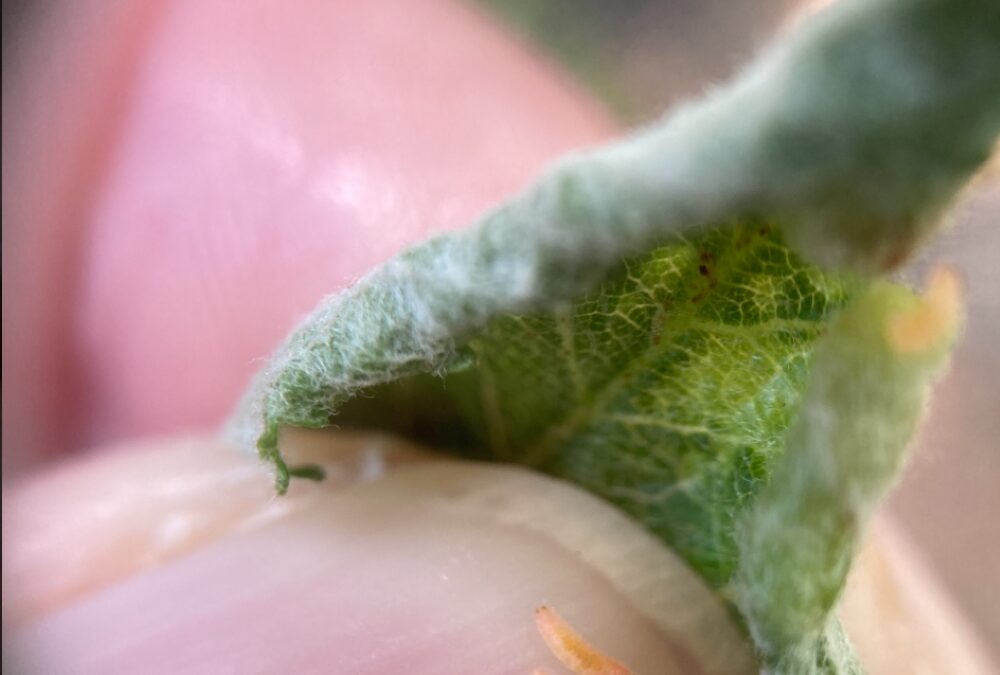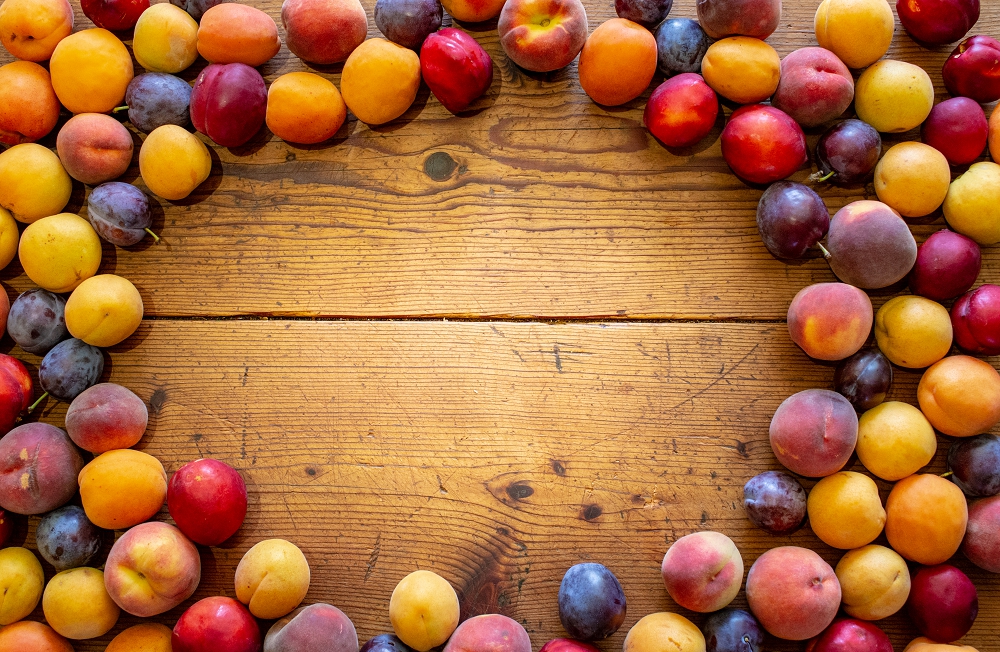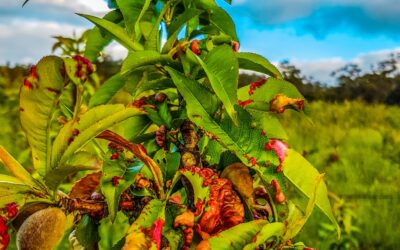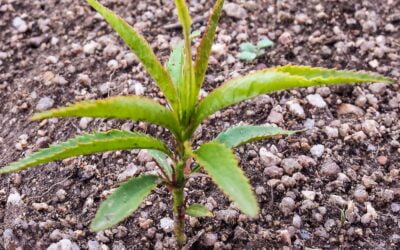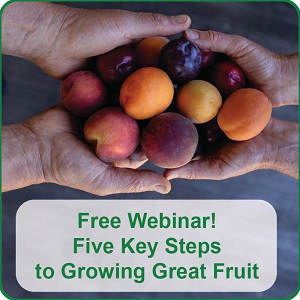Apple tree leaf curl is a sign that something isn’t quite right with your apple tree and you need to take action to ensure your tree can produce good crop of apples.
We love growing organic apple trees, and they are (rightly) one of the most common backyard trees for gardeners and homesteaders alike.
While apple leaf curling midge is a common cause in many parts of the world, Australia is lucky to be free from this pest. In its absence, curling leaves on apple trees are rare in our experience, but they can still happen.
Estimated reading time: 4 minutes
Apple tree leaf curl: What’s Causing the Problem?
If you’re seeing distorted or curled leaves on your apple tree in Australia, it’s likely due to environmental stress, pests, or nutrient imbalances.
Curling leaves on peach or nectarine trees are likely to be caused by a disease. Understanding this can go a long way to helping prevent the disease each spring.
Let’s look at the most common causes in Australia and what you can do to fix them. Even if you live somewhere that has apple leaf curling midges, the curly leaves in your apple tree may have a different cause.
Let’s look at some of the more common causes.
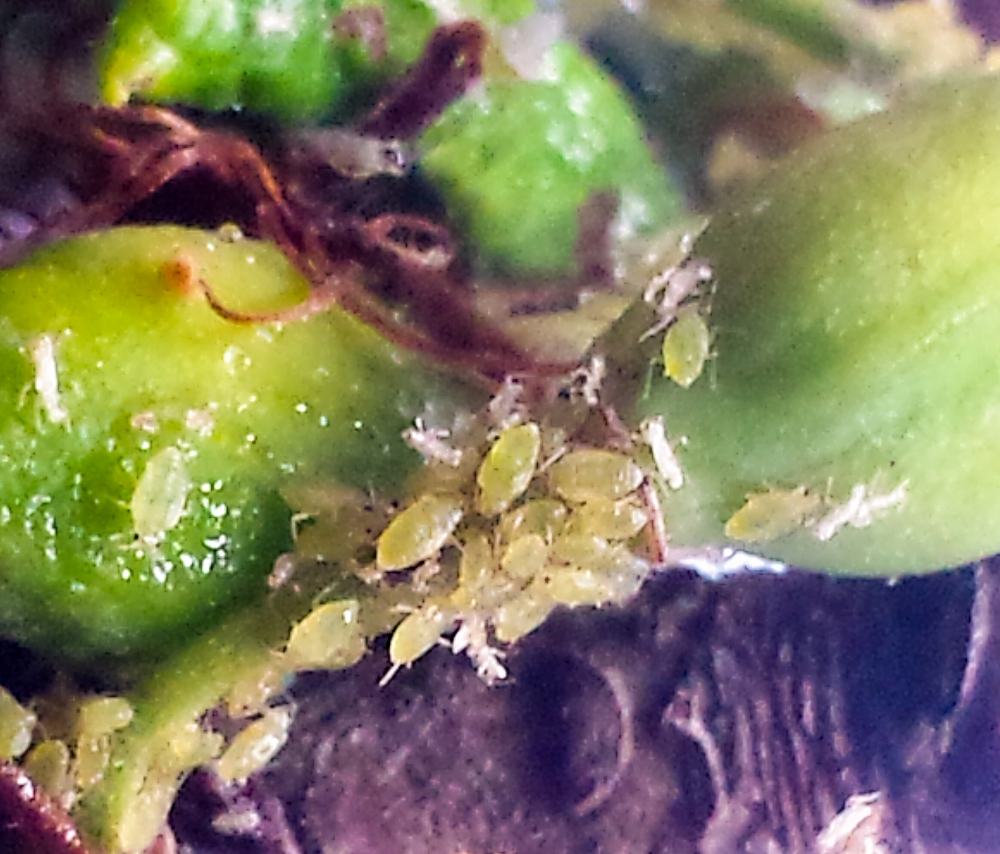
Aphids – the most likely culprit for curling leaves in apple trees
One of the most common reasons for curling leaves on apple trees in Australia is an aphid infestation. This may be black aphids, woolly aphids, or green peach aphids.
These tiny sap-sucking insects feed on the leaves, causing them to distort and curl. You might also notice a sticky residue (honeydew) on the leaves, which can lead to sooty mold.
Solution: Check the undersides of leaves for aphids. If you spot them, try spraying with a strong jet of water or applying insecticidal soap or neem oil. Encouraging natural predators like ladybugs can also help keep aphid populations in check.
Weather stress and watering issues
Apple trees can also develop curly leaves due to environmental factors, particularly hot, dry weather or inconsistent watering. Leaves may curl inward to reduce moisture loss, especially during heatwaves or drought conditions.
Solution: Make sure your tree is getting deep, consistent watering, especially in summer. Mulching around the base helps retain soil moisture and keeps roots cool.
Nutrient deficiencies or toxicity
If your apple tree’s leaves are curling, potassium or calcium deficiencies could be to blame.
Low potassium can cause curling and browning along the leaf edges, while calcium deficiency can lead to weak, distorted growth.
On the other hand, excess nitrogen (often from over-fertilizing) can lead to excessive leafy growth, which is more vulnerable to pests like aphids.
Solution: Test your soil to check for nutrient imbalances. Apply a balanced organic fertilizer in late winter or early spring, and avoid overusing high-nitrogen fertilizers. If potassium is low, applying potash can help.
How to prevent leaf curl in apple trees
Keeping your apple tree healthy is the best way to prevent leaf curl. It’s not difficult, it just involves getting all the basics right!
Regularly inspect leaves for signs of pests, keep watering consistent, and provide the right nutrients. It’s also a great idea to prune your apple trees regularly.
If your tree does develop curly leaves, diagnosing the cause early will help you take the right action to protect your tree and ensure a great harvest.
Have you noticed curly leaves on your apple tree? Let us know what worked for you in the comments!
More helpful resources
Understanding and treating leaf curl
Related Articles
Peach leaf curl
Peach tree leaf curl disease is one of the main causes of curly leaves on your peach and nectarine trees, but it’s usually preventable.
Growing Your Own Fruit Trees From Seed
Seed saving for growing your own fruit trees for grafting is an ancient technique that is useful, free, and easy to learn.
What causes citrus leaf curl?
Citrus leaf curl can be caused by insects, nutritional problems, or irrigation issues. Disease may also be the culprit.

